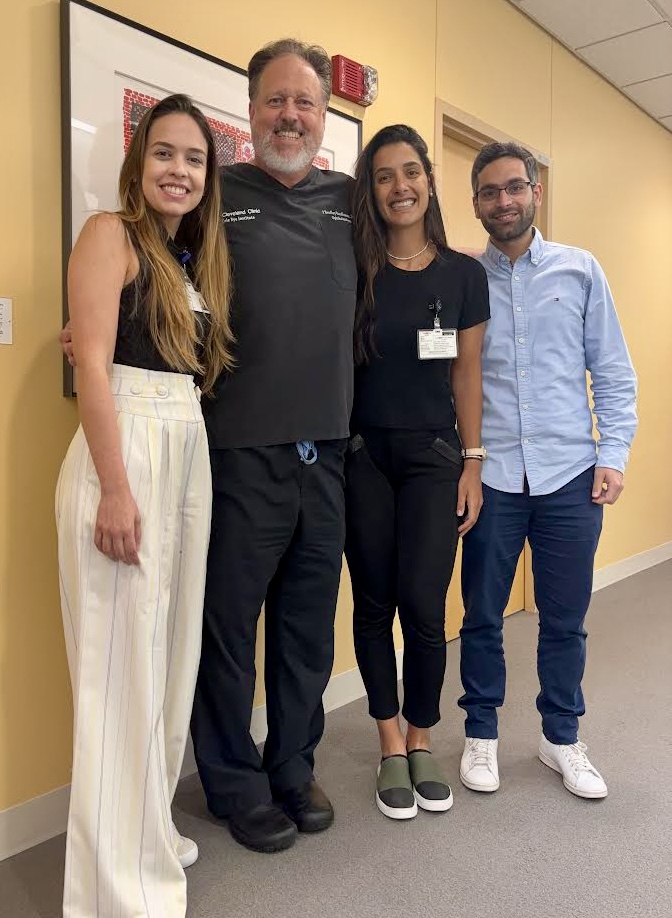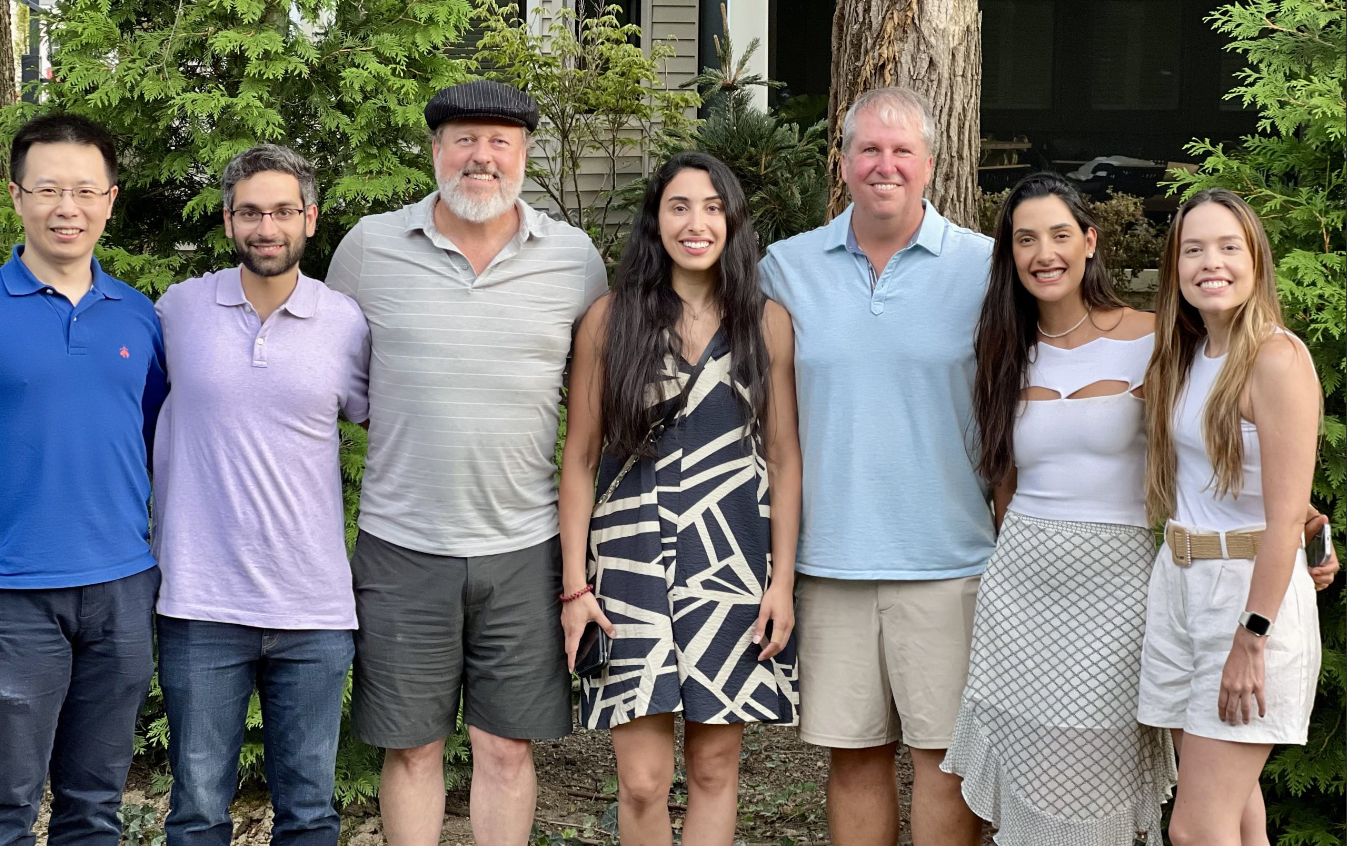J. Bradley Randleman Laboratory
-
J. Bradley Randleman Laboratory
- Principal Investigator
- Research
- Our Team
- Publications
- Careers
Research
The J. Bradley Randleman Lab develops non-invasive all-optical imaging techniques to measure the mechanical properties of the cornea to identify signs of tissue weakening before clinical diseases such as keratoconus have developed. This work will allow us to identify patients before vision loss has occurred and further improve safety and outcomes from vision correction surgeries. With the knowledge our techniques provide, patients can receive personalized, effective treatments for their unique needs.
Our clinical and laboratory research uses motion Brillouin microscopy to evaluate the impact of various treatments on our corneas, and then use that knowledge to develop strategies to prevent or reverse negative impacts.
Learn more about our ongoing projects and research goals here!
Biography
James (Bradley) Randleman, MD, is a Professor of Ophthalmology at Cleveland Clinic's Cole Eye Institute. He was previously Professor of Ophthalmology at the Keck School of Medicine of University of Southern California (USC), Director of the Cornea & Refractive Surgery Service at the USC Roski Eye Institute in Los Angeles, California, and the Hughes Professor of Ophthalmology at Emory University and Director of the Cornea Section at the Emory Eye Center.
A widely respected cornea specialist, his areas of expertise include corneal and intraocular lens (IOL) refractive surgical procedures, including LASIK, and the management of corneal ectatic disorders. His primary research focuses on the identification and management of corneal ectatic diseases, including keratoconus and postoperative LASIK ectasia, and the avoidance, diagnosis and management of refractive surgical complications. He has been awarded multiple NIH R01 grants to evaluate corneal biomechanical analysis using Brillouin Microscopy.
Dr. Randleman received his BA degree from Columbia College at Columbia University in New York City, his M.D. degree from Texas Tech University School of Medicine in Lubbock, Texas, where he was elected to the Alpha Omega Alpha medical honor society in his junior year, followed by his Ophthalmology residency at Emory University in Atlanta, Georgia. Dr. Randleman joined the Emory faculty and served as Assistant Residency Director for two years while also completing a fellowship in Cornea/External Disease, and Refractive Surgery at Emory University. He served as Director of the Emory Corneal Fellowship program until taking over as Director of the Cornea Service in 2010 and was named the Hughes Professor of Ophthalmology in 2016.
Dr. Randleman has been awarded the Claus Dohlman Fellow Award, the inaugural Binkhorst Young Ophthalmologist Award from the American Society of Cataract and Refractive Surgery, the Kritzinger Memorial Award, Founder’s Award, and the Inaugural Recognition Award from the International Society of Refractive Surgery, and the Secretariat Award, Achievement Award, and Senior Achievement Award from the American Academy of Ophthalmology.
Dr. Randleman has served as Editor-in-Chief for the Journal of Refractive Surgery since 2011. He has authored more than 200 peer-reviewed publications in leading ophthalmology journals in addition to 50 book chapters on refractive surgery evaluation, corneal cross-linking, and management of complications with IOLs, and has authored five textbooks, including Collagen Cross-Linking and Corneal Cross-Linking 2nd Edition, which he co-edited on Farhad Hafezi, MD, PhD, Refractive Surgery: An Interactive Case-Based Approach, Intraocular Lens Surgery: Selection, Complications, and Complex Cases, Refractive Surgery for High Myopia: Options and Special Considerations, and Atlas of Corneal Imaging.
Education & Professional Highlights
Professional/Academic Appointments
2004-2008 Assistant Professor, Emory University, Atlanta
2008-2012 Associate Professor, Emory University, Atlanta
2008-2011 Associate Editor, Journal of Cataract and Refractive Surgery
2008-2011 Associate Editor, Journal of Refractive Surgery
2011-present Editor-In-Chief, Journal of Refractive Surgery
2012-2016 Professor, Emory University, Atlanta
2012-2016 Director, Cornea, External Disease, & Refractive Surgery, Emory University, Atlanta
2015-2016 John H. & Helen S. Hughes Professor of Ophthalmology, Emory University, Atlanta
2016-2019 Professor, Ophthalmology (Clinical Scholar) Keck School of Medicine of USC, LA
2019-present Staff, Cleveland Clinic Cole Eye Institute
2020-present Professor, Department of Ophthalmology, Cleveland Clinic Lerner College of Medicine
Honors & Awards
Alpha Omega Alpha (Junior): Texas Tech School of Medicine
Claes Dohlman Fellow Society (Outstanding Corneal Fellow in Nation)
Secretariat Award: American Academy of Ophthalmology
Binkhorst Young Ophthalmologist Award, (inaugural awardee): American Society of Cataract and Refractive Surgery
Senior Achievement Award: American Academy of Ophthalmology
Award of Excellence in Resident Education, USC Roski Eye Institute
Kritzinger, Founder’s, President’s, & Lans Award, International Society of Refractive Surgery
Research
Research
We use motion Brillouin microscopy to evaluate the impact of various treatments on corneal biomechanics in humans and laboratory models. Our goal is to develop novel techniques to measure in vivo corneal biomechanics properties to revolutionize the identification and management of corneal ectatic disorders such as keratoconus and to advance the state of refractive surgery by individualizing patient treatments based on their biomechanical profiles. Read on to learn about past and present projects!
- Dr. Randleman’s early research and primary area of scientific contribution is in refractive surgery screening for postoperative ectasia risk. His early research established the major clinical risk factors for post-LASIK corneal ectasia and the Ectasia Risk Score System (ERSS), a screening algorithm widely used in screening LASIK candidates and developed the initial protocols for post-LASIK ectasia management and rehabilitation strategies (1, 2, 3).
- To better identify subclinical ectatic disease presentations, our team has established the depth-dependent biomechanical stiffness differences in human corneas and early morphologic changes in subclinical keratoconus (4, 5).
- We have developed motion tracking Brillouin microscopy for in vivo mechanical evaluations and the detection of subclinical keratoconus (6, 7, 8).
About Us
 |
 |
Our Team
Selected Publications
View publications for J. Bradley Randleman, MD
(Disclaimer: This search is powered by PubMed, a service of the U.S. National Library of Medicine. PubMed is a third-party website with no affiliation with Cleveland Clinic.)
Dr. Randleman has authored over 150 peer-reviewed articles; 31 editorials; 21 letters; 8 books, monographs or journal volumes; and 48 book chapters.
View all publications for J. Bradley Randleman, MD
(Disclaimer: This search is powered by PubMed, a service of the U.S. National Library of Medicine. PubMed is a third-party website with no affiliation with Cleveland Clinic.)
Selected Publications
- Risk factors and prognosis for corneal ectasia after laser in situ keratomileusis. Ophthalmology, 2003.
- Risk Assessment for Ectasia after Corneal Refractive Surgery. Ophthalmology 2008.
- Corneal Ectasia after Excimer Laser Keratorefractive Surgery: Histopathology, Ultrastructure, and Pathophysiology. Ophthalmology, 2008.
- Depth-dependent Cohesive Tensile Strength in Human Donor Corneas: Implications for Refractive Surgery. J Refract Surg, 2008.
- Distinguishing Highly Asymmetric Keratoconus Eyes Using Combined Scheimpflug And Spectral Domain OCT Analysis. Ophthalmology, 2018.
- Motion-tracking Brillouin microscopy for in-vivo corneal biomechanics mapping. Biomed Opt Express, 2022.
- Motion-Tracking Brillouin Microscopy Evaluation of Normal, Keratoconic, and Post-Laser Vision Correction Corneas. Am J Ophthalmology, 2023.
- Subclinical Keratoconus Detection and Characterization Using Motion-Tracking Brillouin Microscopy. Ophthalmology, 2024.
Careers
The Randleman lab does not currently have any openings. This can always change, so please check back here often!
Training at Lerner Research Institute
Our education and training programs offer hands-on experience at one of the nationʼs top hospitals. Travel, publish in high impact journals and collaborate with investigators to solve real-world biomedical research questions.
Learn More